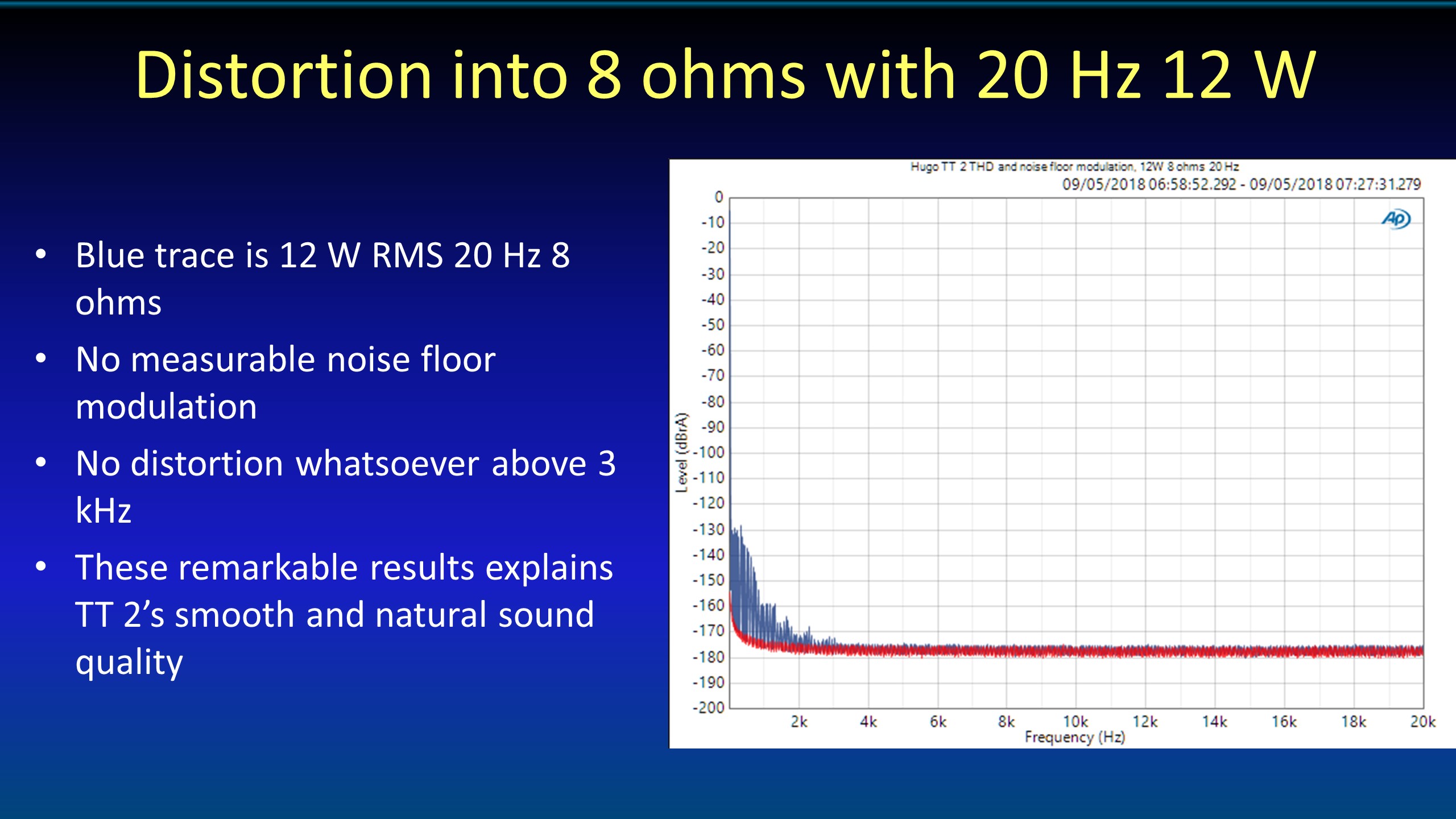So here is the presentation I made at Munich yesterday about TT2. Unfortunately, time for these presentations is limited to half an hour, so I had to be somewhat brief.
So this is a general introduction to the importance of the timing of transients.
The FPGA used in TT2 has 5 times the capacity of the original TT, and double the size of the FPGA used in Hugo 2. Also, because it is a desktop unit, I do not have the power limitations that Hugo 2 has, so I can fully exploit the FPGA used - the Artix 35T.
Talking about why noise floor modulation is important.
The actual steps needed to remove noise floor modulation actually is vast, and affects all design decisions within a DAC/amp; it's also an issue that is impossible to solve using regular chip DAC's, due to on chip noise, and other vital issues.
The improved noise shaper is about 100 times more effective than Hugo 2, and is approaching Dave's noise shapers' performance. Does this mean TT2 has the same depth and detail resolution as Dave? No I am afraid not. Dave is still considerably more transparent - although the noise shapers are vital, there is more to depth and transparency than just the noise shapers.

So now we are getting into the more interesting stuff with TT2 - the output stage and PSU. When you turn on TT 2, it enters a charge mode, where a large controlled current is fed into the supercaps to charge them up and this takes about 10 seconds. The charge process is via a FET switcher and a very large inductor; this has two benefits - the current drawn from the supply is large and constant (3A) but initially is converted to ten amps going into the super-caps as the voltage is low. The second benefit of the inductor is that, together with other other inductors, ferrites and capacitors, removes noise from 20 Hz (actually the filter starts at 1 Hz) to 5 GHz. The power unit supplied is actually much more capable than it seems, and the PSU structure has been built around this particular power unit. I went through a lot of power supplies and a couple of design revisions, to ensure that when connected there was no measured change in performance at all. So this power structure has the benefits of ultra low noise from batteries - without the worry of battery life - but also huge dynamic current capability.
The OP stage was radically re-designed - initially I was using a beefed up Hugo2 design; but ended up using the design from the power pulse array project as this had been running in parallel to TT2's development. This OP stage is capable of large amounts of current, and more importantly, is extremely low distortion with current delivery - as you increase current load, distortion barely changes, and then only by increasing 2nd harmonic only.
But there is no point in having an output stage that has no distortion with current, if the PSU can't deliver the current. This is where the super caps comes in; audio requires bursts of current, and super caps are perfect at doing this; so the effect of the large inductor and the supercaps with the 1 Hz filtering, means that the PSU is only seeing DC current - no audio components.
I really wanted TT2 to be all things to all men; so I needed it to perform perfectly with ultra sensitive IEM's, and power hungry monster headphones, and then with loudspeakers directly - all with the philosophy of maximum simplicity on the analogue section as per previous designs.
So the key points here is very low residual noise (1.7 uV) in low gain mode - lowest noise of any DAC I have designed before - but with 6W into 8 ohms, with extremely low distortion at 0.00016%.
Usual zero jitter.
Of course, no measurable noise floor modulation.
So this shows distortion barely changing with 6W into 8 ohms, and again with zero measureable noise floor modulation.
This measurement was something I don't usually publish, but it was so extraordinary, and it illustrates how effective the second order analogue noise shaper actually is and how linear the new OP stage is. If you look above 3 kHz there is zero difference from the no signal noise floor - so no measurable distortion at all. Remember this is at 12W into 8 using the balanced XLR OP - I have never seen this level of performance before from a power amp, with no high order harmonics at all, so it is very remarkable.
Rob
















